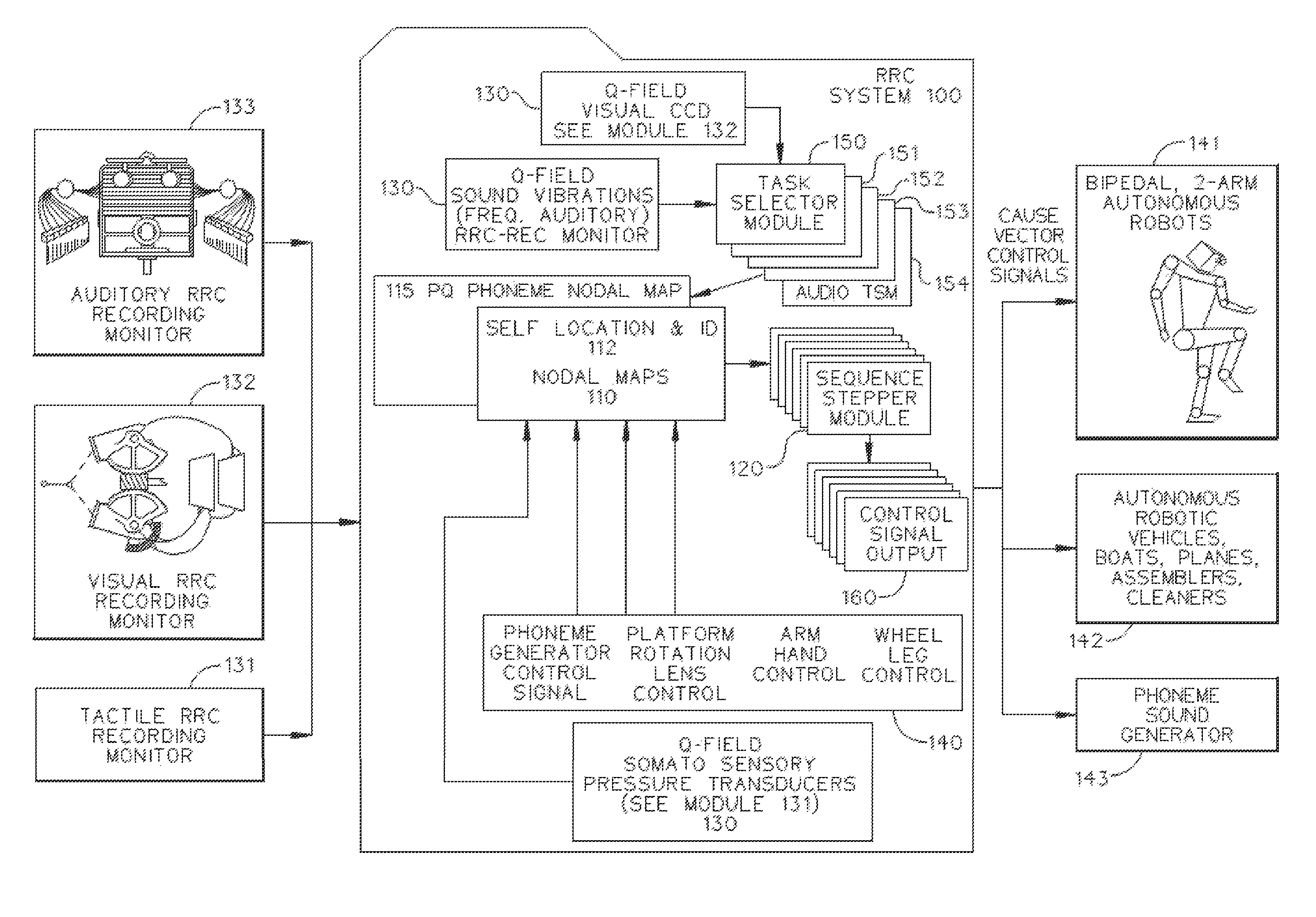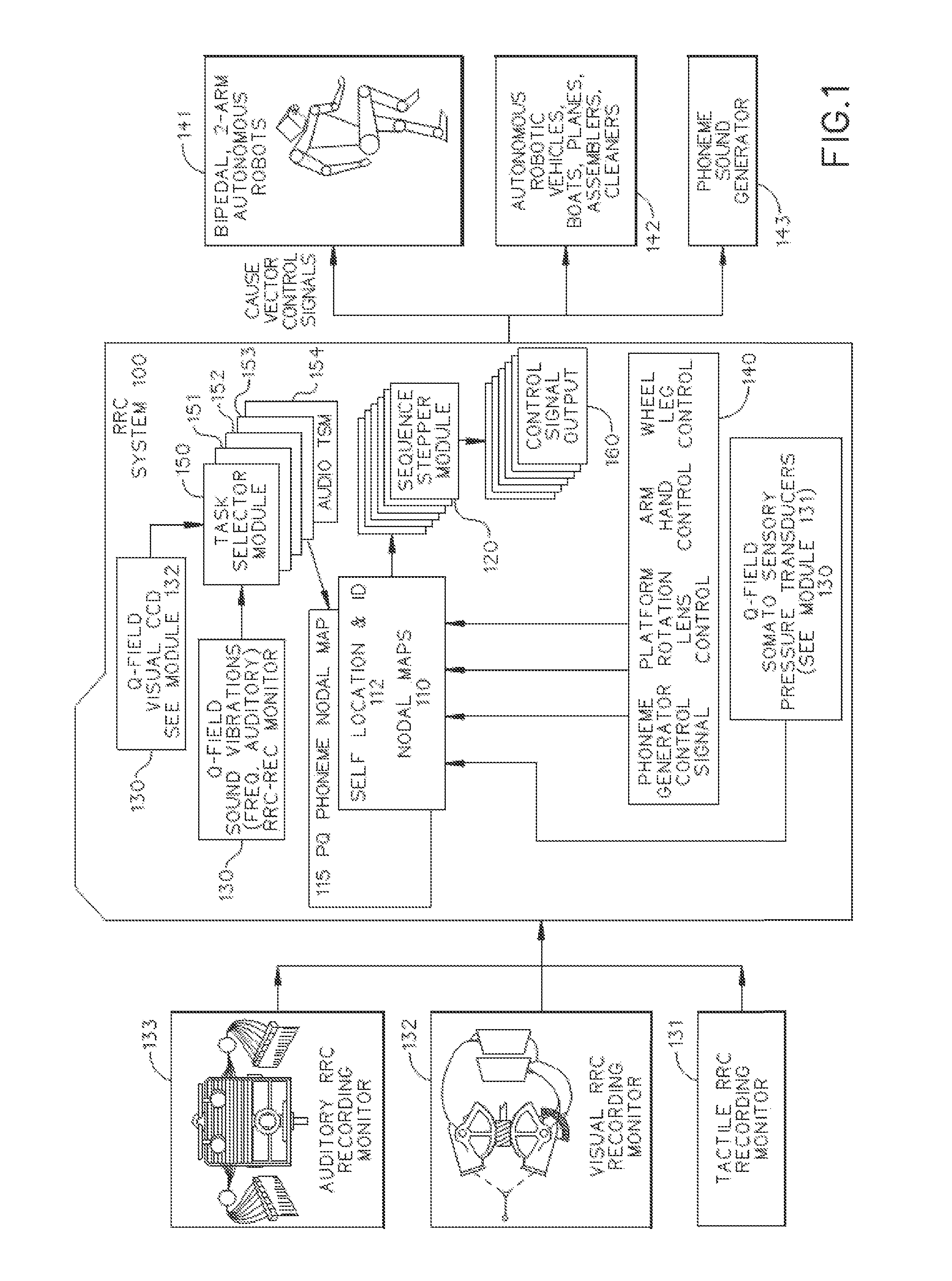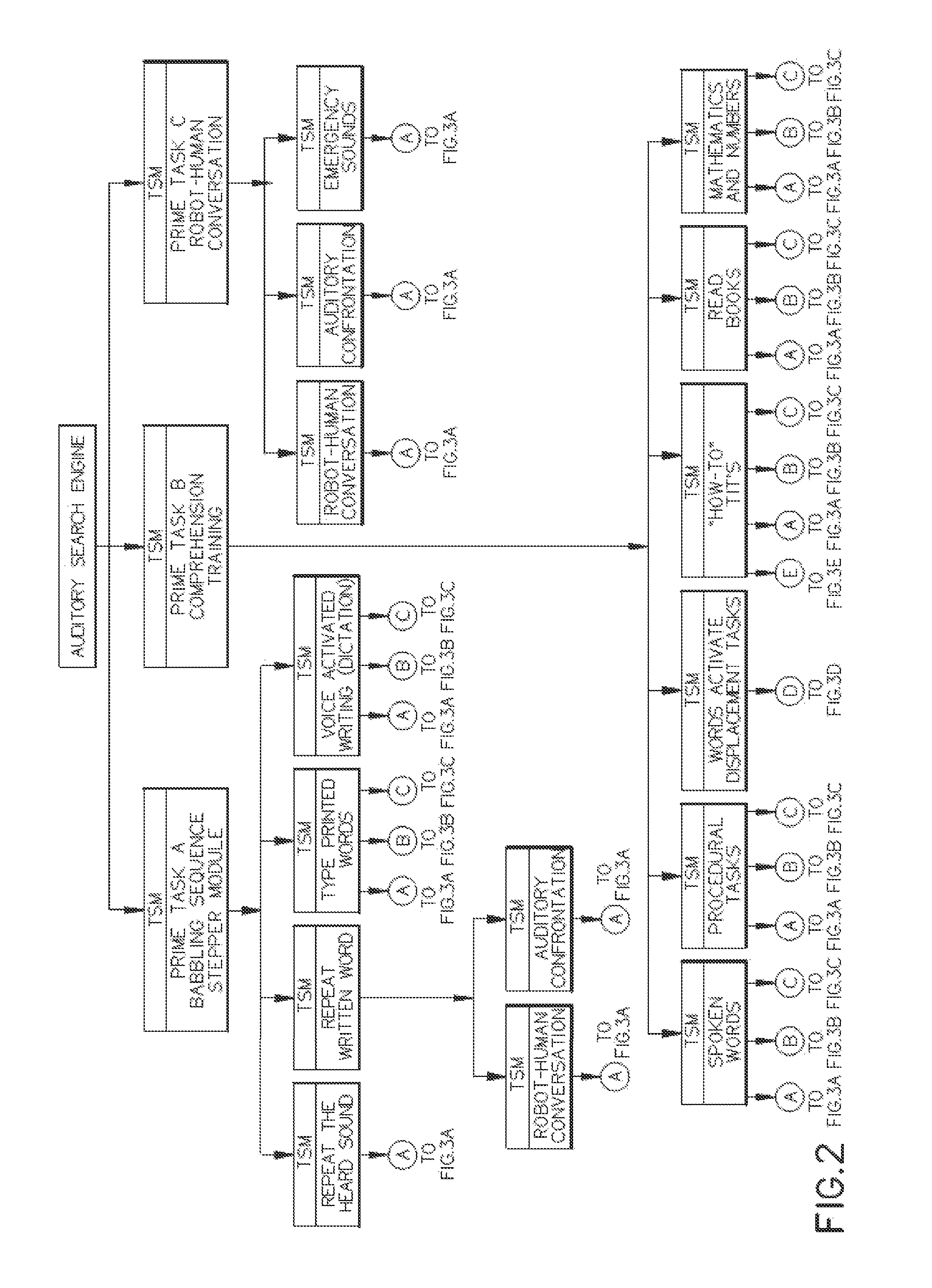Intelligent auditory humanoid robot and computerized verbalization system programmed to perform auditory and verbal artificial intelligence processes
a humanoid robot and intelligent technology, applied in computer control, program control, instruments, etc., can solve the problems of invariance of acoustic signals associated with any given phonetic segment, difficulty in dividing acoustic signals into discrete segments, and the inability of computer auditory/declarative systems to solve the problem of acoustic mapping
- Summary
- Abstract
- Description
- Claims
- Application Information
AI Technical Summary
Benefits of technology
Problems solved by technology
Method used
Image
Examples
Embodiment Construction
[0372]In the following sections, a preferred embodiment of the invention is described with regard to preferred process steps and data structures. Those skilled in the art would recognize after perusal of this application that embodiments of the invention can be implemented using one or more general purpose processors or special purpose processors or other circuits adapted to particular process steps and data structures described herein, and that implementation of the process steps and data structures described herein would not require undue experimentation or further invention.
[0373]A description of the operation of a RRC that supports programming of human-like intelligence levels into the system is presented in Section A, followed by a description of the auditory apparatus stage (Section B), the interface circuit stage (Section C), and the processing of the data stage (Section D) is described as an 8-step process for the 3 stages illustrated in Table 1.
[0374]
TABLE 1An auditory RRC ...
PUM
 Login to View More
Login to View More Abstract
Description
Claims
Application Information
 Login to View More
Login to View More - R&D
- Intellectual Property
- Life Sciences
- Materials
- Tech Scout
- Unparalleled Data Quality
- Higher Quality Content
- 60% Fewer Hallucinations
Browse by: Latest US Patents, China's latest patents, Technical Efficacy Thesaurus, Application Domain, Technology Topic, Popular Technical Reports.
© 2025 PatSnap. All rights reserved.Legal|Privacy policy|Modern Slavery Act Transparency Statement|Sitemap|About US| Contact US: help@patsnap.com



